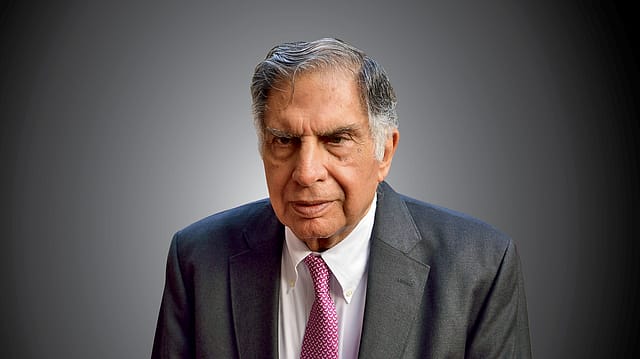Ratan Tata, the man who made Tata Motors a carmaker of consequence, turns 85
ADVERTISEMENT

Mild-mannered and soft-spoken, Ratan Tata, who turned 85 on Wednesday, and chaired group holding firm Tata Sons from 1991 to 2012, made a confession sometime in 2008. “Yes, I have the credit—and notoriety—of getting us into this business. Automobiles are very emotive products and the technology is very engaging.”
Ratan Tata—who studied architecture and structural engineering at Cornell University, which perhaps explains his passion for automobiles—was speaking on the sidelines of the Geneva Motor Show—where Tata Motors introduced its models, including the Tata Nano, which was given the moniker of the ‘₹1 lakh car’. However, the prying eyes of the media were more interested in even a couple of alluding comments from the eminent Tata—who speaks in his characteristic, cultivated English—on the impending transaction to acquire the marquee carmaker brand Jaguar Land Rover (JLR). Tata Motors eventually acquired JLR from Ford for $2.3 billion.
The select few present in the roundtable were made privy to how the business magnate and philanthropist perceived the acquisition. As veteran journalist Ray Hutton recounts in his book, Jewels in the Crown: How Tata of India Transformed Britain's Jaguar and Land Rover, there was little confidence that Tata Motors—who, at the time, made no-frills cars for the still incipient Indian carbuying class, and were notorious for quality and reliability issues—would be able to turn the fortunes around of JLR, something that the iconic carmakers Ford Motor Company of the U.S. and BMW of Germany were unable to achieve. “We would retain the touch and feel of Jaguar Land Rover, not tinker with the brands in any way. Our philosophy for any company we become involved with, is that we grow with them; we take them forward,” Ratan Tata said.
January 2026
Netflix, which has been in India for a decade, has successfully struck a balance between high-class premium content and pricing that attracts a range of customers. Find out how the U.S. streaming giant evolved in India, plus an exclusive interview with CEO Ted Sarandos. Also read about the Best Investments for 2026, and how rising growth and easing inflation will come in handy for finance minister Nirmala Sitharaman as she prepares Budget 2026.
The media and analysts, both at home and abroad, were cynical of the acquisition. Many in the U.K. believed that the acquisition was the epitaph of the West Midlands region, where JLR was based. Both the expertise and equipment will be moved to India, and Tata Motors would manufacture the Jaguars and Land Rovers in the subcontinent, where manufacturing costs were low. Back home, the acquisition had triggered a sell-off of Tata Motors’ scrips, with the share price dropping 77% from its previous high.
However, Tata and his team beat all odds that were stacked against them, and after bringing a new approach to the company—with a long-term, sustainable strategy, and positioning of its newer models (particularly the XJ saloon, the F-Type, and the Evoque)—revitalised the brands. In 2011, the company delivered a pre-tax profit of £1.2 billion. This began a record-run for the brand—with JLR delivering a pre-tax profit of more than one billion British pounds every year.
The acquisition and successful turnaround of JLR is one among the many successful chapters Tata inked at the helm of Tata Motors. Ratan Tata took over the mantle of the chairman from JRD Tata in 1991, at the same time when India was undergoing economic liberalisation. At the time, Tata Motors was called TELCO, and made commercial vehicles. With Ratan Tata at the helm, the company introduced passenger vehicles—the Tata Estate and the Tata Sierra, now that the economy was opening up to new players. However, these cars were perceived as something the nouveau riche would buy, but little did they know that these cars were setting the precedent of something no one thought of—India’s first fully indigenous family car.
It was his predecessor JRD Tata’s unfulfilled dream to build a passenger car, but the closed economy during his days forbade his dream to fructify. Ratan Tata roped in designers from Italy to design its chassis; experts from France were hired to test its engine, and he purchased and imported the almost new manufacturing equipment from Nissan’s sparingly used Australian plant for ₹100 crore. Rest, as the adage goes, is history. The car, known as the Indica, received 1.25 lakh bookings, mostly against the entire amount. Reports suggest that within a month, Indica cornered a market share of 14%, forcing Maruti Suzuki to drop the prices of its cars to lure customers.
However, the success was short-lived. The first generation of the Indica had a design flaw, and it earned the customers’ ire more than the fulsome praise it was launched with. Both the press and public opinion were against Ratan Tata, who rebuked his ambition of making an indigenous car, without having any prior experience.
Unfazed, Ratan Tata conceded the carmaker’s mistake, and promised to come back with a flawless car, reportedly costing Tata Motors ₹500 crore to fix the issue. It culminated in the launch of the Indica V2—which made a fortune for the company. Tata Motors cumulatively sold 14.69 lakh units of the Indica—with over nine lakh units in the first 10 years. The V2 also won the JD Power survey. The V2, had indeed, given the foundation Ratan Tata needed to build Tata Motors a ‘carmaker of consequence’.
